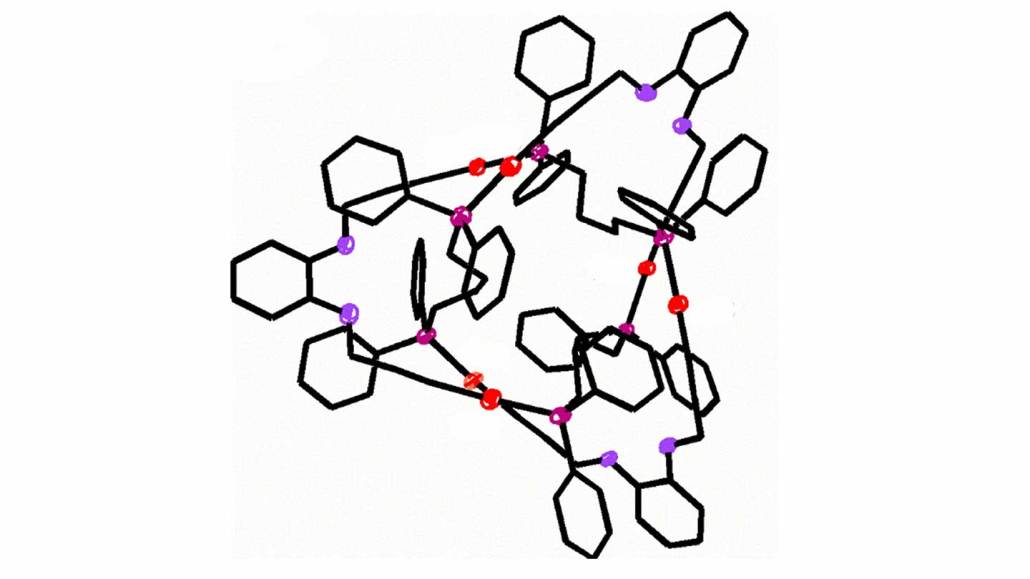The smallest known molecular knot is made of just 54 atoms
The trefoil knot is also the tightest of its kind

In this simplified illustration of the smallest known molecular knot, a chain of 54 gold (red), phosphorus (purple), oxygen (mauve) and carbon (black) atoms crosses itself three times to form a pretzel-like shape.
Z. Li et al/Nature Communications 2024






